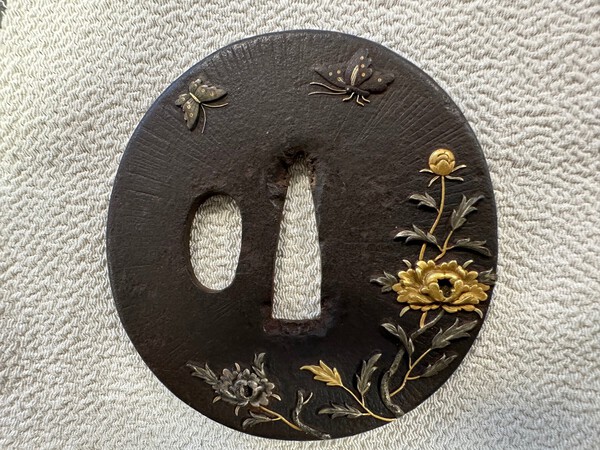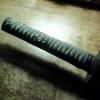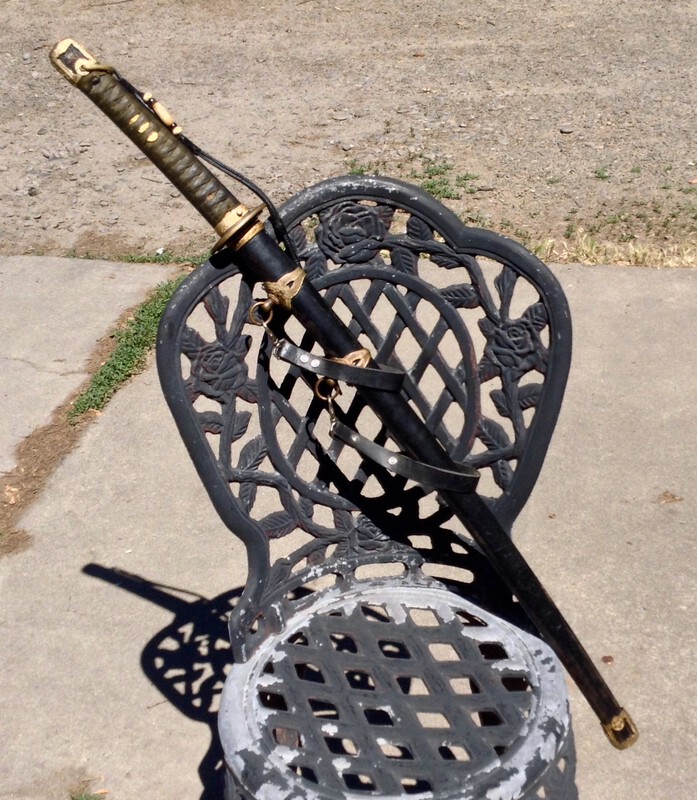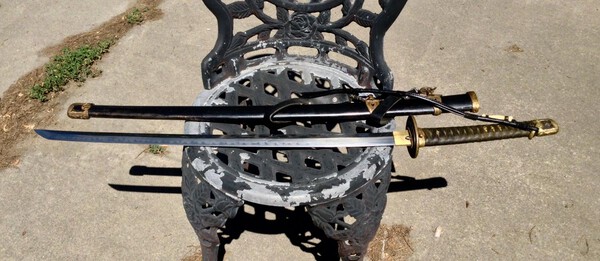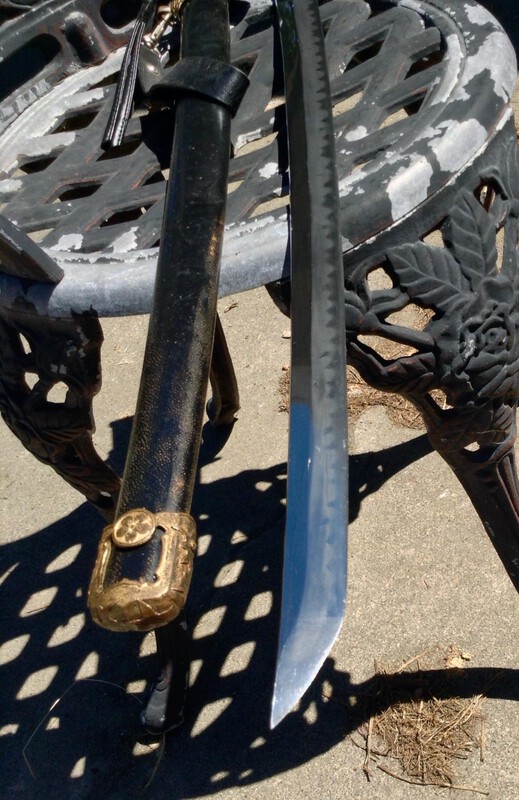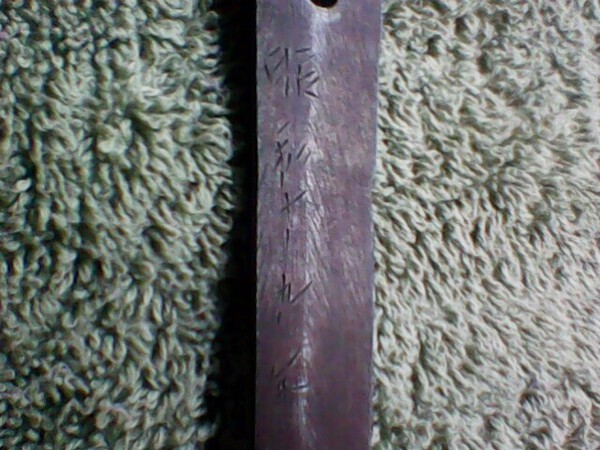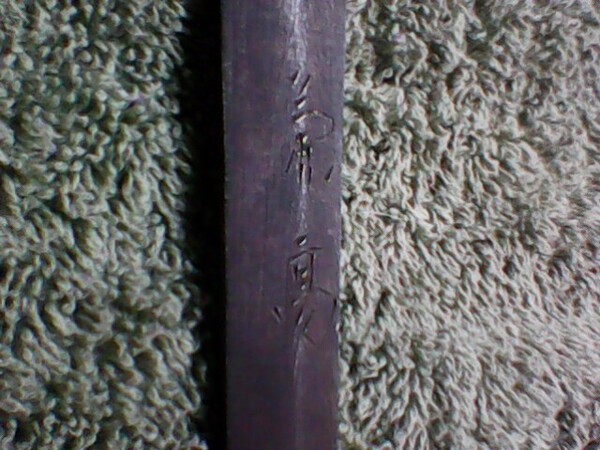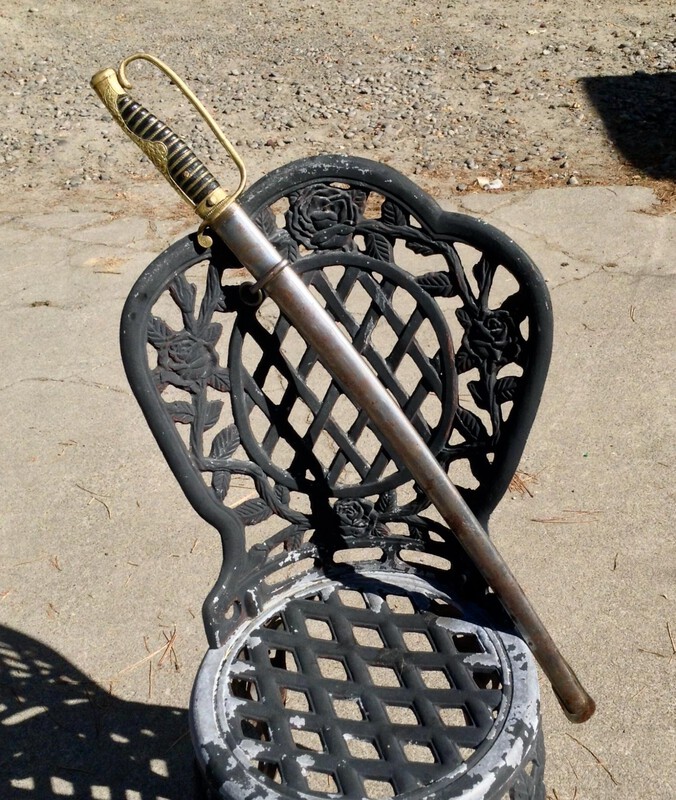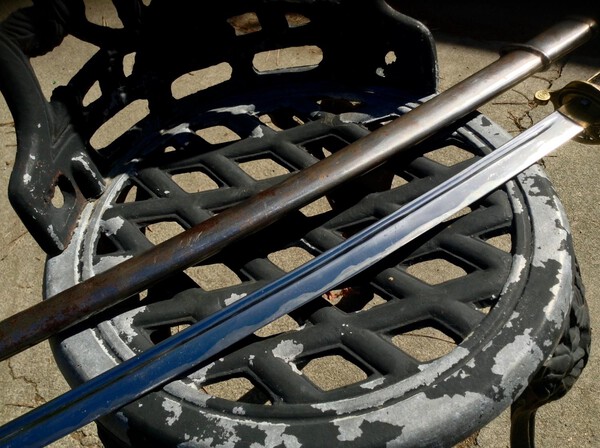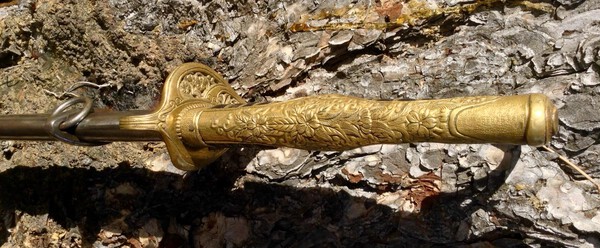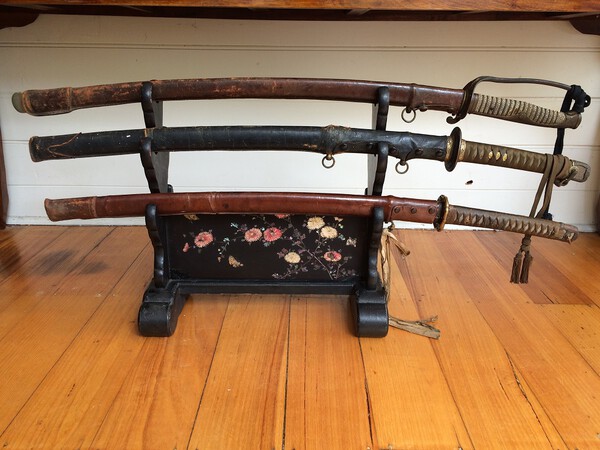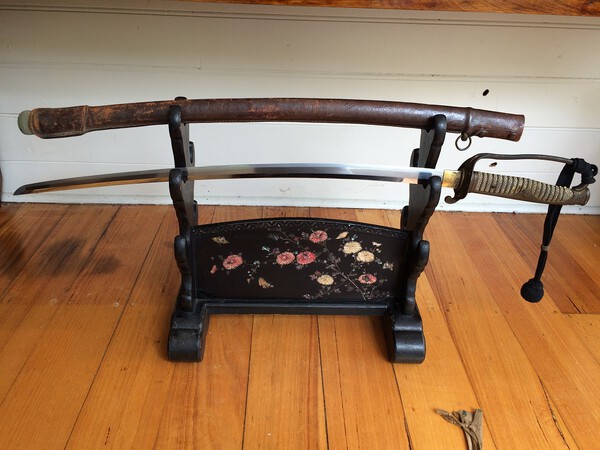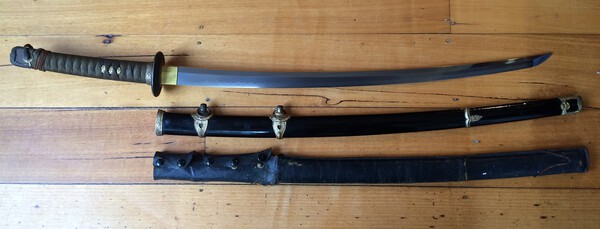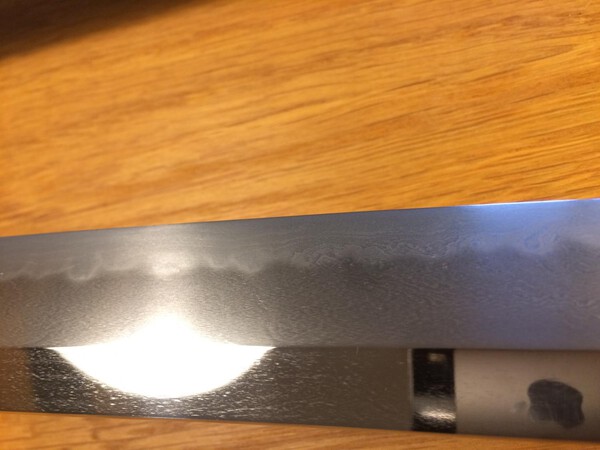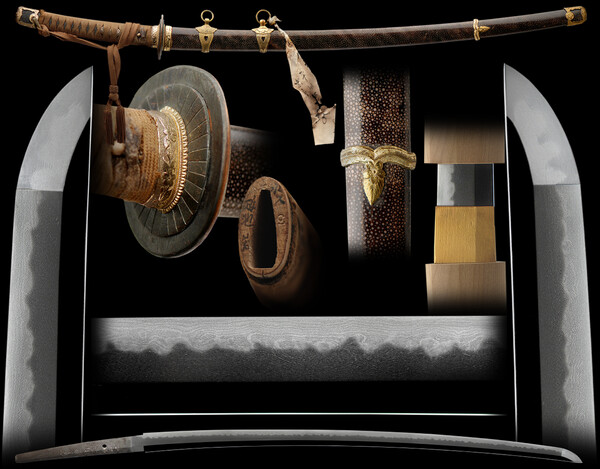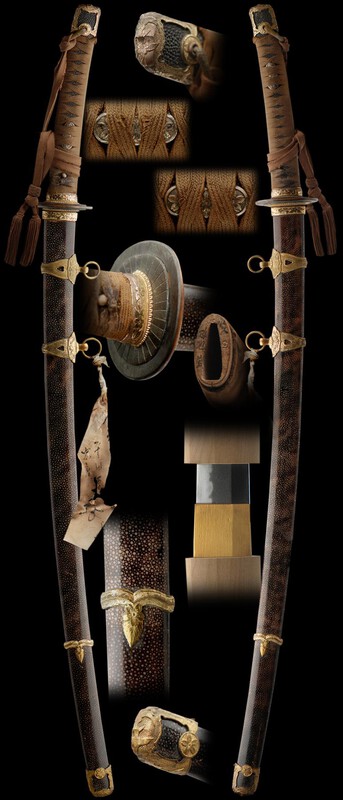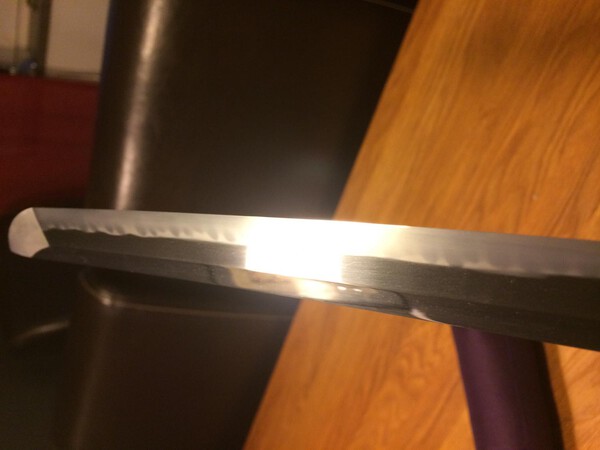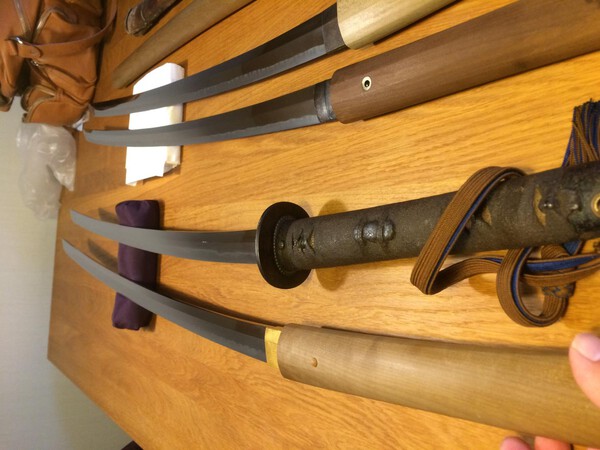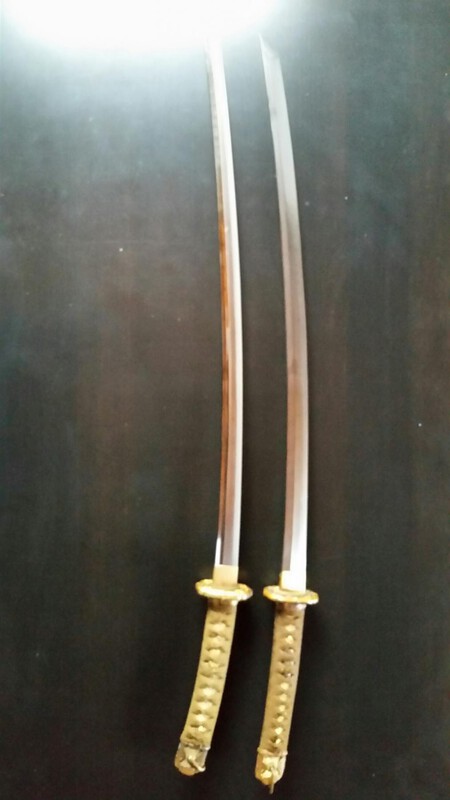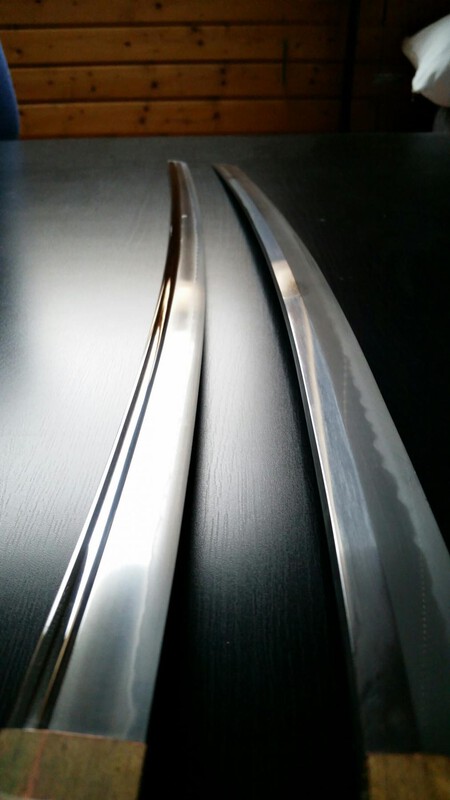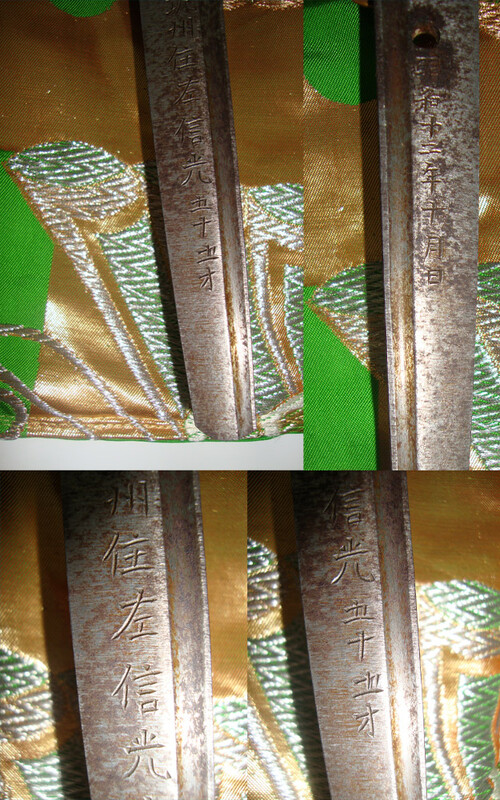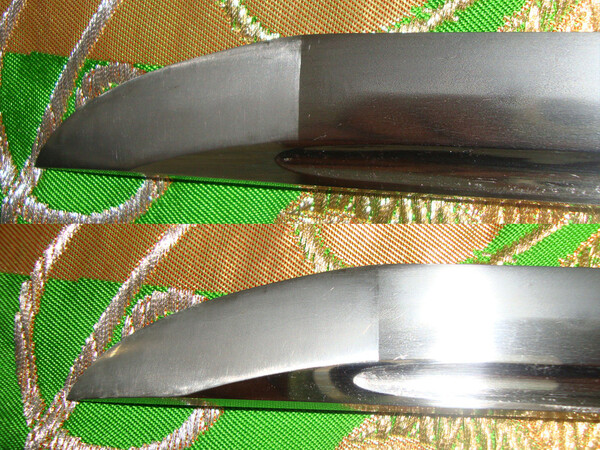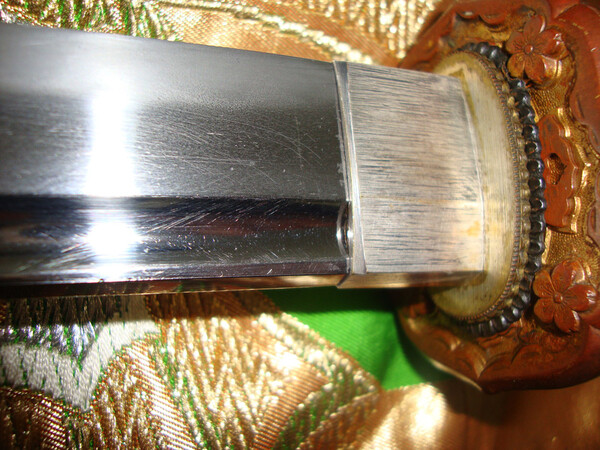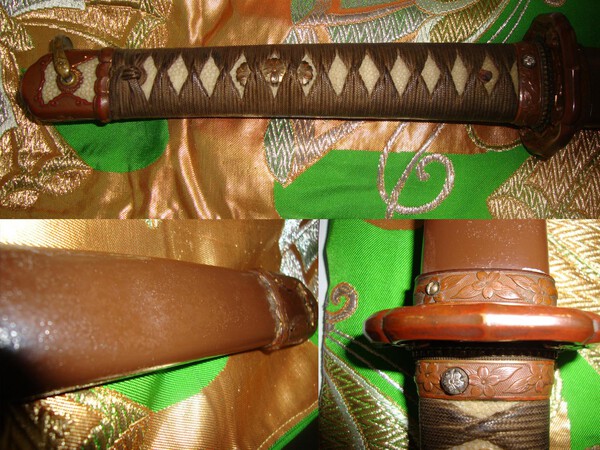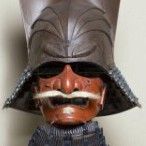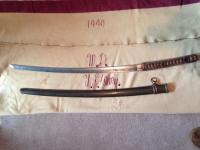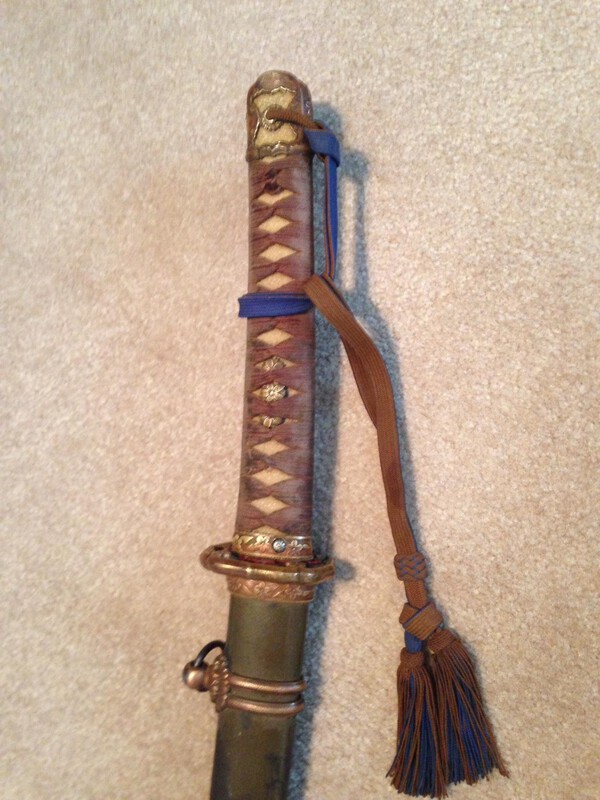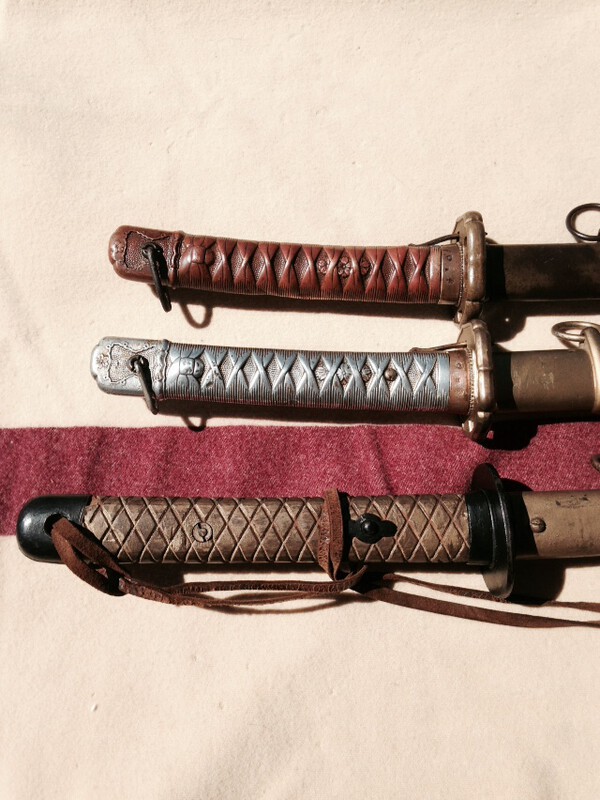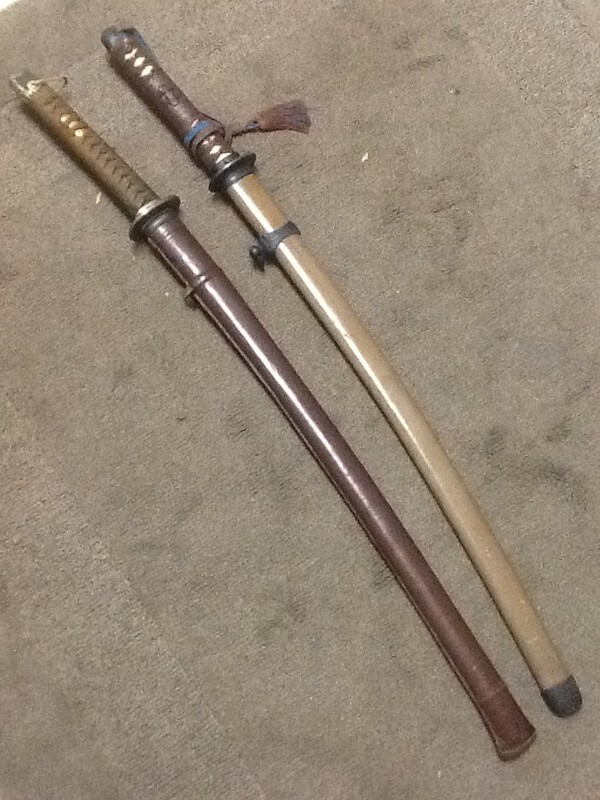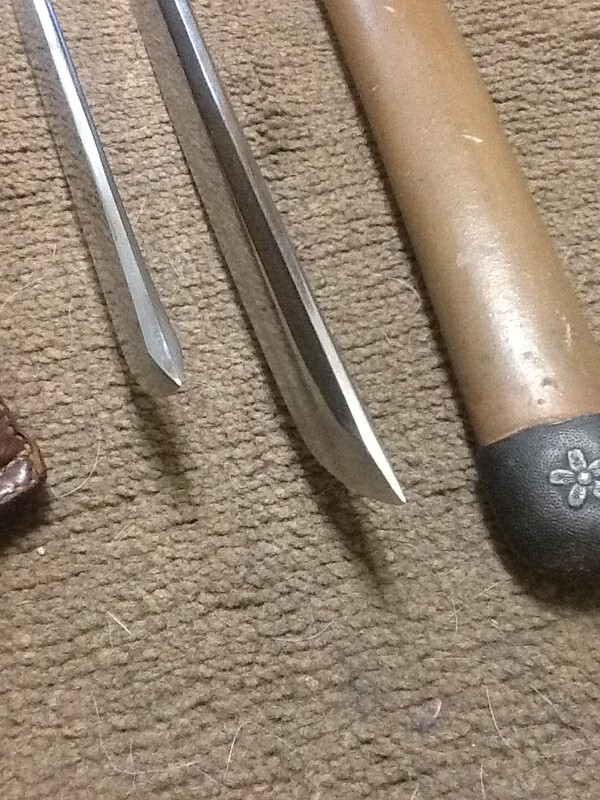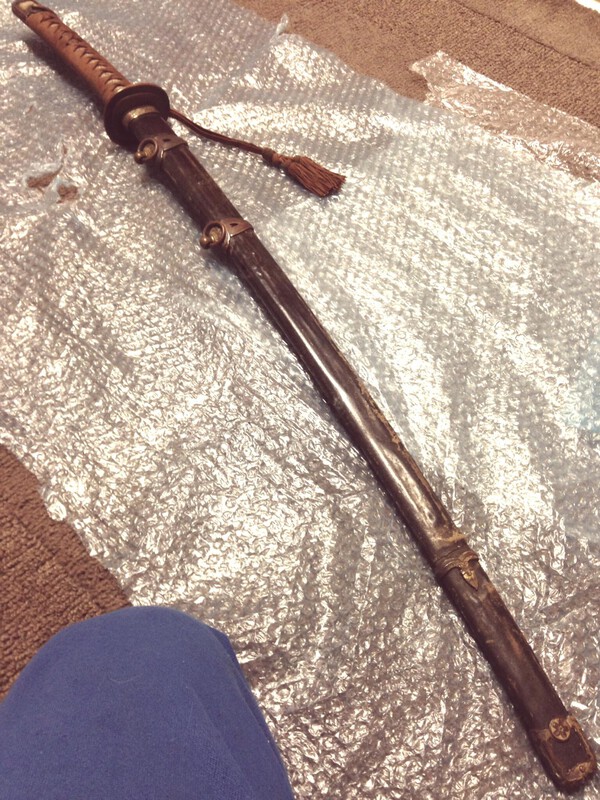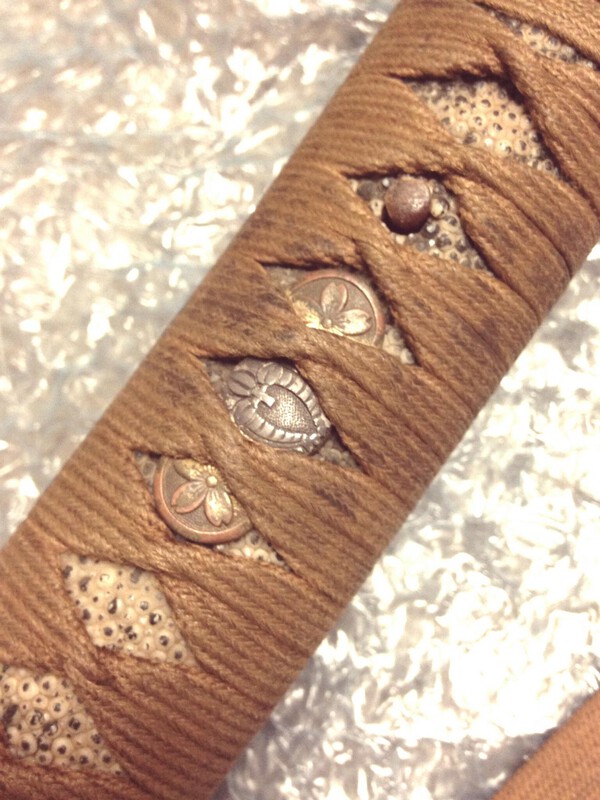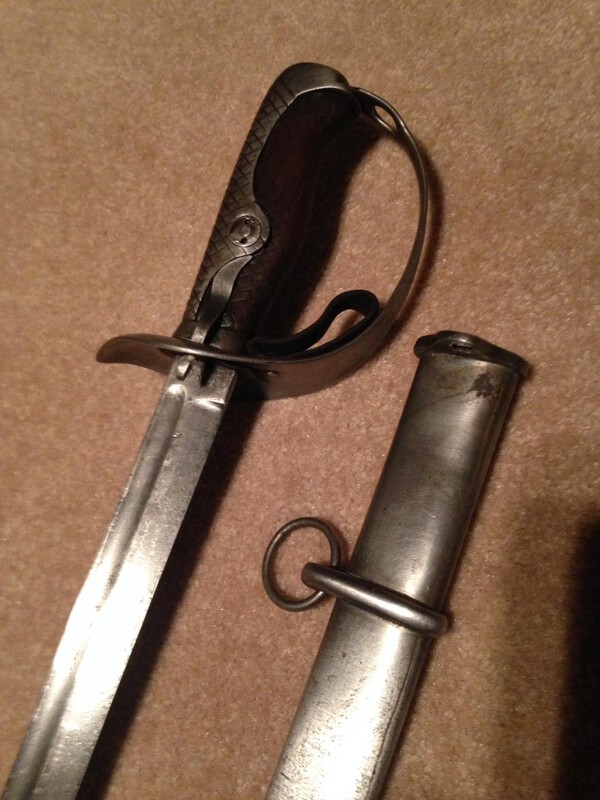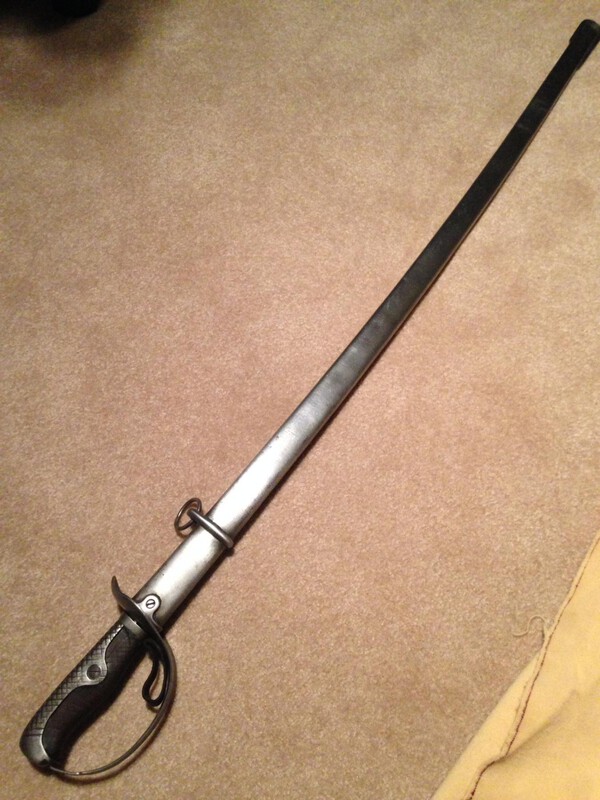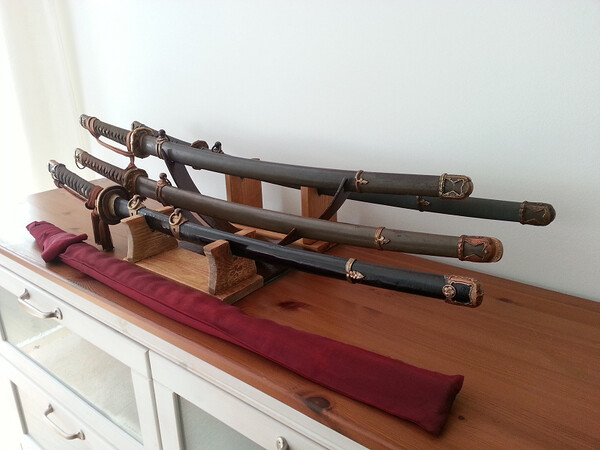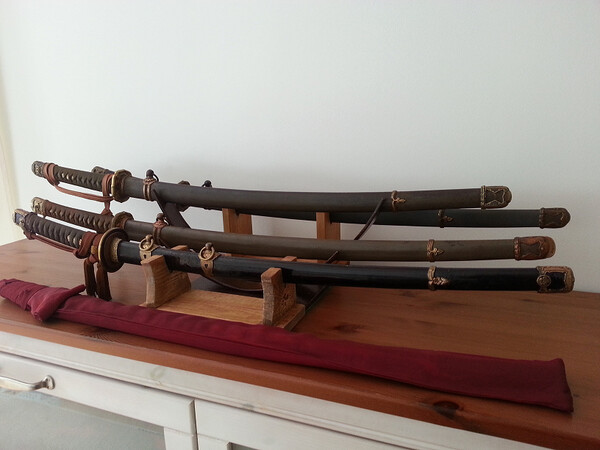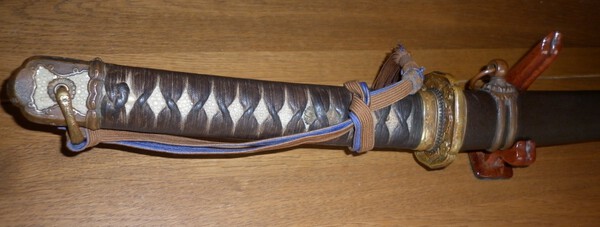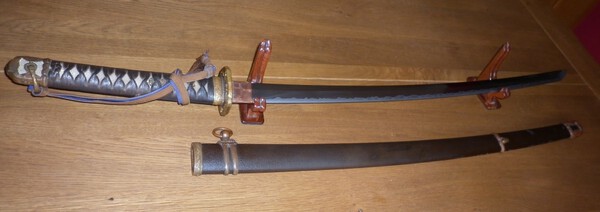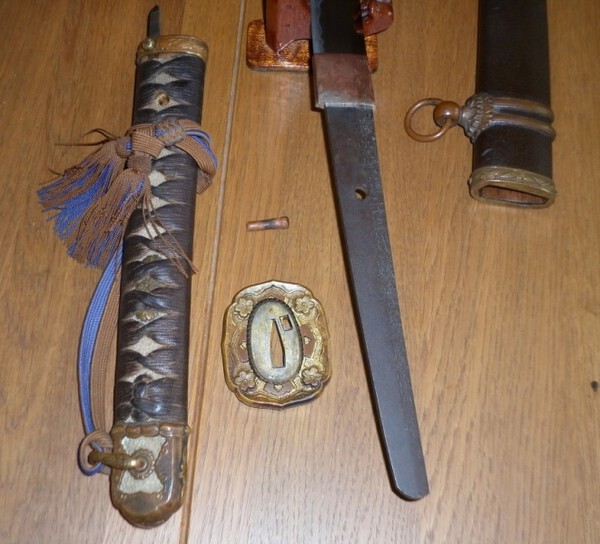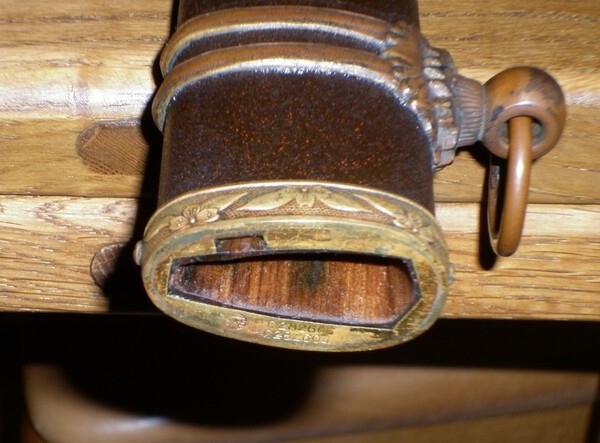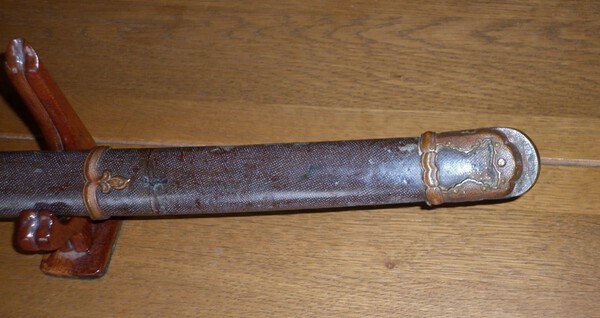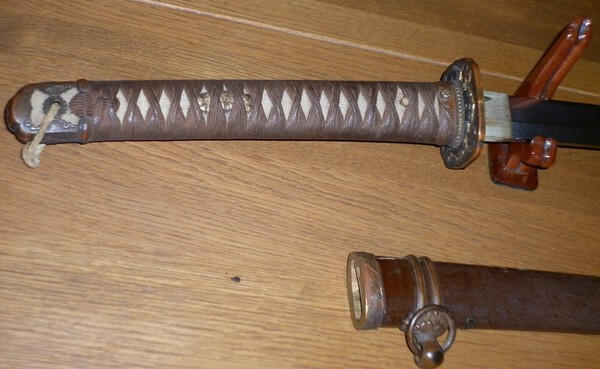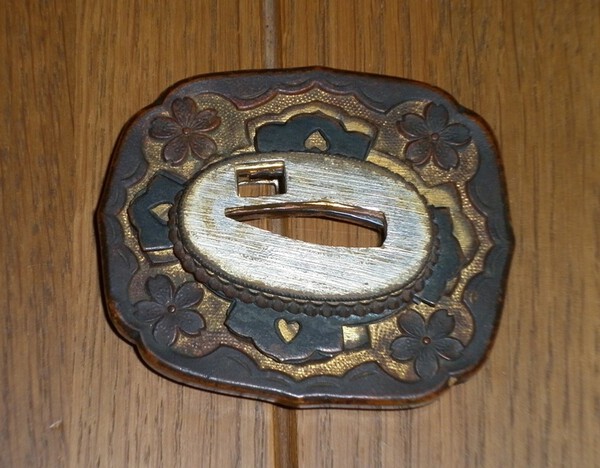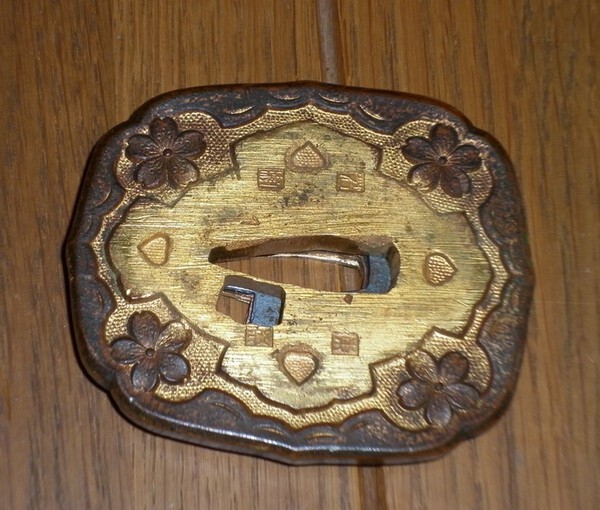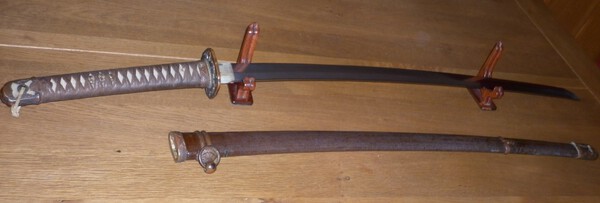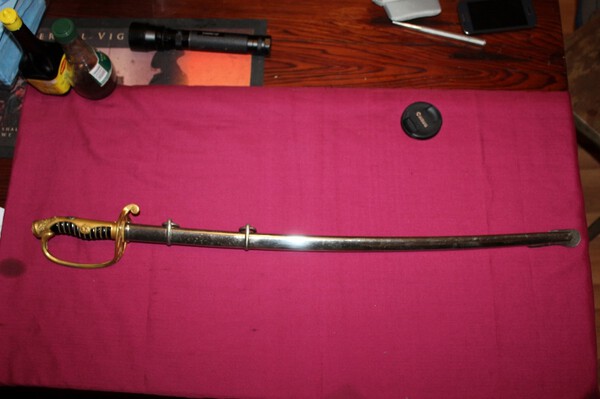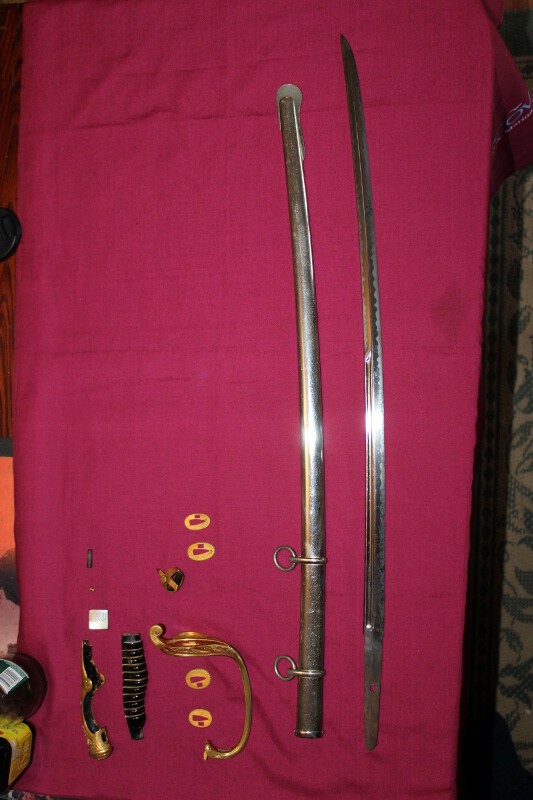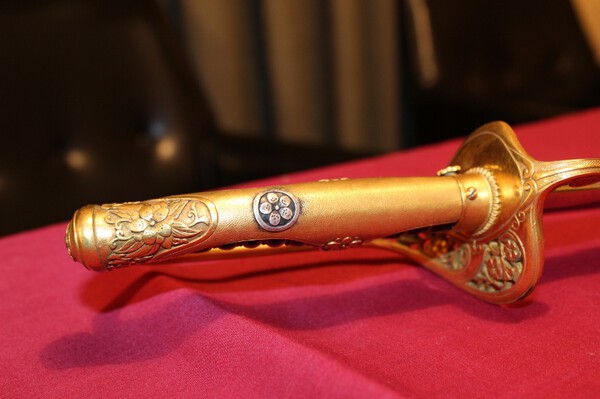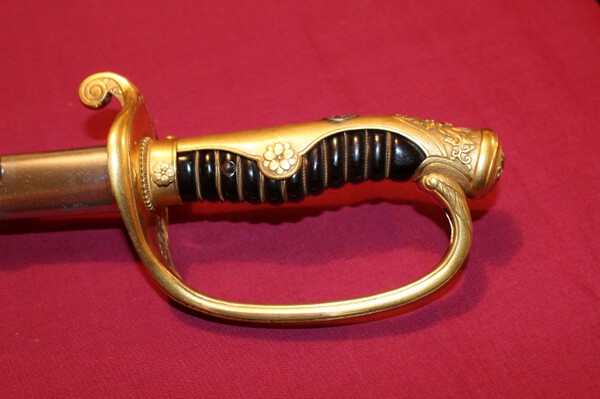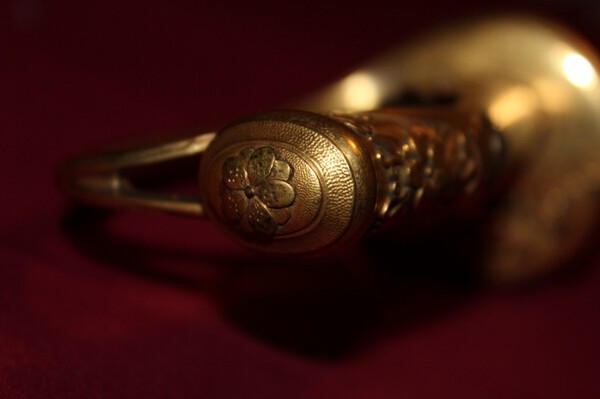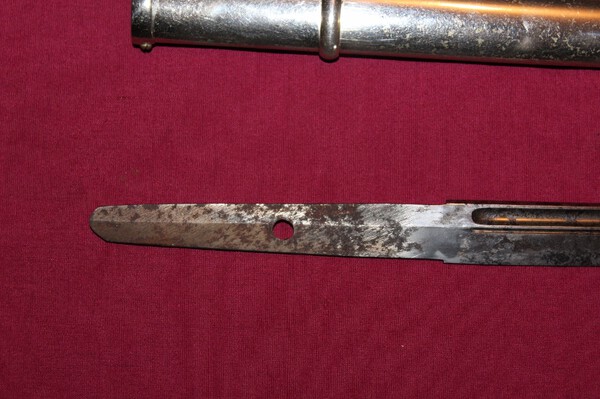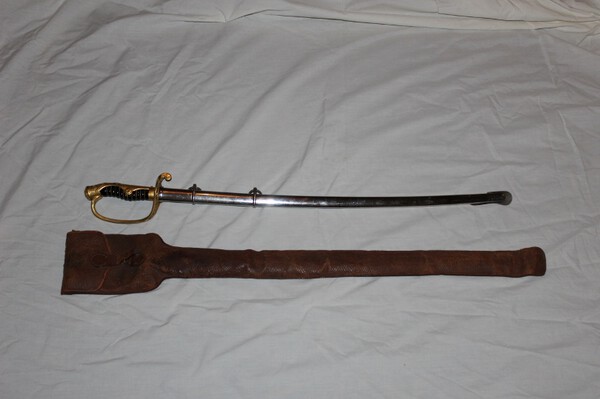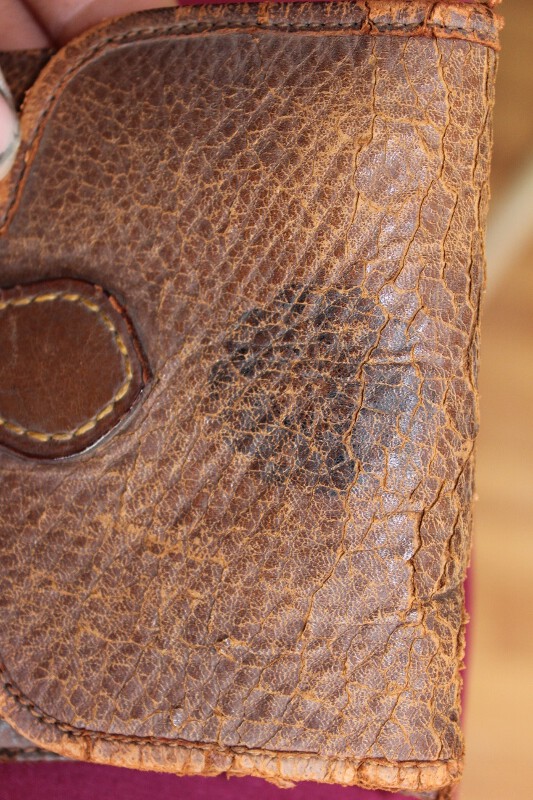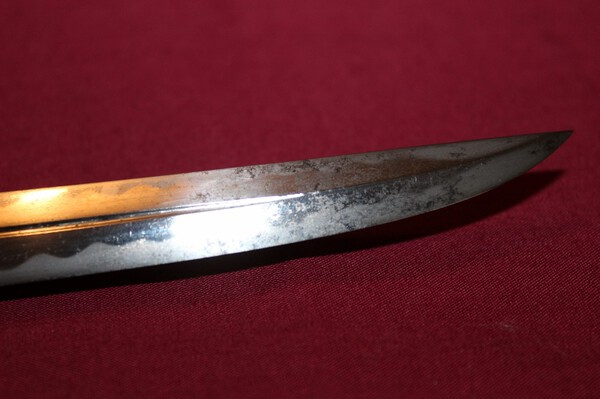Leaderboard
Popular Content
Showing content with the highest reputation on 10/12/2024 in all areas
-
5 points
-
4 points
-
Hi Dale, I think that the gentleman collector that you refer to as being named adjacent to the back b/w view of the tiger is Donald Stoehr. There are a number of obituary notices for him, if the same person, but I have not seen anything that references a specific interest in Nihonto or fittings. To the best of my knowledge, the tiger pair were split ( under contentious circumstances ) in the early 2000s. It is quite likely that the original and still missing piece ended up with an east European or Russian collector after the Nagel auction. This was getting on for 20 years ago and so it could have changed hands multiple times since then. Images of the Utsushi that Ford made have been freely available on the internet for many years also. Sites like pinterest have shown it for a long time, so it is no wonder the Chinese fakers have picked up on it. Obviously, it was only after the views of the back of the tiger tsuba became known to us that it was possible to compare Ford's Utsushi with the original. The more complicated treatment of the point where the tiger sits was an interpretation of the available information from the front view ie. in that area, almost nothing. I remember having long telephone and Skype conversations with Ford about that area on the piece , and eventually deciding to go with the paws and exposed bamboo framing, all of which were very difficult to blend convincingly. As I am sure you are well aware, there is more background information and commentary to see on the 'A series of fittings' thread - for those who are unaware or would like to revisit, the relevant Item Nos. are 306 and 307. Best Bob3 points
-
I also hate the term “machine made.” It gets carelessly thrown around on places like Reddit when people ask for gunto IDs. IMO the only Japanese WWII blades that can accurately be called “machine made” are Type 95s, zoheito, and possibly the navy stainless blades (I’ve never been able to find good info on how these were actually made). Typical officer showato were “hand” forged to shape from bar stock by smiths using power hammers. Every blade is slightly different, and sayas and fittings do not freely interchange. They’re non-traditional because they aren’t made of tamahagane or orishigane and are oil quenched. Not because they’re not “hand forged”. Gendai smiths used power hammers too. If the use of power hammers makes a sword “machine made,” then most gendaito are “machine made.”3 points
-
3 points
-
I think I may have solved a mystery that caused the late Ford Hallam to "recreate" a "lost tsuba" - I believe I found that lost tsuba in Hawley's "TSUBAS IN SOUTHERN CALIFORNIA" Page 301 of that picture book. In the book there is an odd view of the ura side of a guard which should have been flipped over - to me it is obviously the same tsuba that was "missing" or so close to it that it makes no difference. Remember the book was published in 1973 so it is impossible for the image to be of the utsushi made by Ford. See this blog from 2009 https://followingthe...-cat-out-of-bag.html What do you think? Was Hallam looking on the wrong continent and the tiger was in California all along? There is a signature on the Hawley image but it is not clear enough to read, Ford may have assumed that the small guard he had access to was made and signed by the same maker as the larger piece, but he did not have the ura view to back this up. Anyone know a collector from California by the name of "Stoehr" ? He may know of the whereabouts of the lost guard. [PS. Ever notice the title of Hawley's picture book is WRONG - no such thing as tsubas surely he knew the plural of tsuba was still tsuba!]2 points
-
@Aegon I understand where you're coming from because I used to have the same idea when I was new to world of Japanese swords. The thrill of testing a sword’s sharpness and putting it to use can be very tempting when you don't fully understand this art. However, the more I studied and learnt, I realized that using old swords isn’t okay, unless you're living in Japan and have no other choice. These swords, crafted by skilled hands in a different time, were passed down through generations, surviving wars, conflicts, and history itself because of the careful and responsible owners that cared for them. When we use an old or antique sword, we unintentionally serve our own desires at the expense of the sword’s lifespan. Each time a blade is sharpened or struck against a target, we diminish its original integrity. In a way, the sword ends up serving our ego, rather than us being humble stewards of its history. By taking care of these swords, rather than using them, we honor the people who crafted and preserved them before us. Their care is the reason we can enjoy these pieces today. I’ve come to appreciate that my role is not be the final destination of the the swords I aquire, but to preserve them so that future generations can experience their beauty and craftsmanship just as we do now. It's not just about ownership, but stewardship and there's something deeply rewarding in that perspective Frankly speaking, with the abundance of affordable reproduction swords available for iaido and tameshigiri it would be plain careless to use anything historical for that purpose. And I wouldn't be proud to tell anyone of it, as it would only highlight my ignorance On another note, I wish you the best of luck with that tsuka and saya project of yours 👍2 points
-
Make sure to open a police case. This is the only way these guys will eventually get what they deserve.2 points
-
It's amazing how a little 'patina' can get museums so excited, when there are SOOO many examples from the period that are in pristine condition. 'Richly decorated' is stretching it. To spend money on a 'restoration' is a fallacy when the funds could be better spent on some high quality polishes of other blades. I find it hard to imagine what it looked like pre-restoration. Some things are just a lost cause.2 points
-
I think it is much better that Ford came up with his own slant on the design - makes it unique and not a slavish copy. That is the true Japanese expression of utsushi after all. Lets leave the lousy copying to the Chinese - who, lets face it, are not that great at it! [Yes I know I will never make it through immigration control if I ever visited China!]2 points
-
Shannon, the signature on this TSUBA is upside-down which for me is a clear sign of a fake.2 points
-
Experimenting with my new macro lens and cheap IKEA LED lighting this evening and got some nice images of the Jie formations on the Senjuin. I had to downsize the images to get them to upload onto NMB, but at native resolution they look great. Amazing how effective a $5 LED light can be. I have added the high rez versions of the images here, and a few others, to my Google Drive gallery. https://drive.google...j-eZWYtgSKfamVWFUlsO2 points
-
2 points
-
No “Machine made“ is a term that I hate. Yet, it is a common term often used in the sword collecting world. After the China incident the Japanese military decided to go back to samurai styled swords, there was a massive need to produce a lot of swords to replace the old Western style sword. This created a shortage that the industry had to meet. Modern technology with hydraulic powered machines, allowed them to create more swords than they used to be able to do using traditional techniques. Steel cutting machines, hydraulic hammers, allowed Smith’s to produce many more swords per week and per month. Oil quenching allowed them to produce blades , without cracking. All of this in today’s world created the terminology of the “machine made” sword. The NCO blades used the most machinery, if you want to say it that way. They used machines to roll a single type of steel and cut it into workable sizes, that could then be hydraulically hammered. All of this process involved people that worked the machines and worked the blades. None of it was automated. All of the blades were polished by hand and mounted in fittings by hand.2 points
-
和泉守兼重 Izumi no kami Kaneshige 特別保存刀剣 Tokubetsu Hozon Izumi no Kami Kaneshige was an influential swordsmith active in the early Edo period and is well-known as the master of Nagasone Kotetsu 長曽祢虎徹. Born in Echizen Province (越前国 、present-day northeastern Fukui Prefecture), he moved to Edo around the beginning of the Kan'ei era (1624–1644) and became a court swordsmith for the Tōdō family in Ise Province (modern Mie Prefecture). There is a legend that he was introduced to the Tōdō family with the help of the famous swordsman Miyamoto Musashi, who was a personal acquaintance of Kaneshige. It is said that the two swords beloved by Musashi were inscribed with the signature "Izumi no Kami Fujiwara Kaneshige," but their current whereabouts are unknown. Regarding the workmanship, Kaneshige's swords typically feature a shallow curvature with straight hamon or gunome-midare patterns. Some blades exhibit a Mino-style undulating wave pattern mixed with pointed shapes. The steel used is characterized by a combination of "koitamehada" (small itame pattern) and "masamehada" (straight grain), showing influences from the style of the first-generation Echizen Yasutsugu. The signatures found on his works include "Izumi no Kami Fujiwara Kaneshige," "Izumi Daijō Fujiwara Kaneshige," and "Kazusa no Suke Kaneshige." Price: 18,900 USD included shipping. NAGASA:70.8cm MOTOHABA:3.1cm MOTOKASANE:7mm SAKIHABA:2.15cm SAKIKASANE:5mm If you want more detail photo . plz PM me ro send Email: kevinkuo0419@gmail.com2 points
-
1 point
-
Hello all link to download the DTI 2024 catalog: https://www.toukenku...logue_20241010-2.pdf enjoy M.1 point
-
Dear members, I am offering here an early Ko-Kinko Kogai with a box, around late 16th century. It is very well preserved and is made of Yamagane, as was typical for the period. The motif is cherry blossoms in sukidashi-bori over a punched background with clear traces of urushi. The back of the kogai has subtle sujikai-yasurime. Price: 285,00 €, excl postage and PayPal Kindest regards1 point
-
Hi Brian There's no comparison in the quality of carving of the waves between those 2 tsuba. Would love to know what makes them so confident with the description. Otherwise would have expected something like "in the style of" Would be expecting those guys to have a £2500 price tag for a genuine Omori wave tsuba1 point
-
It also might get flagged if the thief sells it to a Pawn Shop if you have a police report.1 point
-
Will keep an eye open for it! If it pops up on eBay, I'll notify you.1 point
-
I don't think you can judge much from those pics. I don't see mass produced here. Smiths were quite capable of doing very repeated and precise patterns. Just look at a good sanbonsugi hamon. The polish isn't helping evaluation here. It is obscuring much of what you would want to see including the hada. I wouldn't be confident in calling oil or water quenched from that state of polish. But Mino traditionally made can't be ruled out.1 point
-
They certainly look like a match to me! Very interesting post.1 point
-
Yes looking at his pages he has these - but I believe these images were only available after Ford had made his utsushi. I wonder how the guard got from California to Stuttgart and how many other stops along the way? There are a few minute differences between the image in Hawley and the auction in Stuttgart but they may just be photo problems or as Bob M says himself there may be another guard made by the same maker. Anyone got a clue when they started making these hideous copies? [lazy at that - they mirror reverse the image both sides] I know it didn't take long for the Chinese to steal another tsuba designed by Ford.1 point
-
iPhone… I just email photos to myself and it automatically asks me if I want to resize and save. Not sure if android offers this.1 point
-
1 point
-
1 point
-
1 point
-
1 point
-
Thanks for posting this Erik I hadn't seen this item before. Other above me will know lot more than me about fine details. Unfortunately for me the blade is very uninspiring in size & shape, as well as in condition. I think the only reason for the price is that it has the den Norishige attribution. Give it something like Kodai Hōju or generic Uda (Muromachi attributions), and it would be 3,000-4,000$. I know financially this would be an opportunity for many to get a Norishige attributed blade, as they tend to go for very high prices as mentioned above. However I would personally aim for better quality & condition item for much lesser smith for that amount of money, as I would see it as much more enjoyable option.1 point
-
Well, my collection is humble. I have but two guntos: a nice gendai kai gunto by Kuwayama Kanetaka in 1944, and a fine kyu gunto with a blade that strikes me as machine made...but is in the kind of mounts I'm told were designed to take older blades. I'll do a thread about the kyu gunto some day, but here they both are, for now. (Please forgive the modern hangers and sword knot on the kai gunto; I do have an eye out for authentic ones.) I also have an NCO sword. Is that considered a gunto?1 point
-
1 point
-
Ian san, I recently saw a gendaito in gunto Type 98 mounts and it had the owners name written in ink on the brown side of the tassel...it was written in katakana...a Japanese name (forget what it was now) but strange to see it written in kana. And yes, I notice all those things you mention. I have a gendaito by an unknown maker "Shigekuni"...(maybe a modern member of the Nanki line?). It is a very nice sword (Type 98 with silver habaki) and it was surrendered to the Aussies on Halmahera in 1945. The chap who apparently received this sword must have asked the original owner his details, or perhaps a Japanese prisoner translated a surrender tag for him, but anyway, faintly visible on the side of the BLADE (darn) just in front of the habaki is the scratch marks of a fountain pen with small traces of ink still present...it says in English "Sword of 2nd Lt. Kume Kaede (Yellow Autumn Leaves) Division Made by Shigekuni" Research shows that this is the 32nd Div., 2nd Army of the 2nd Area Southern Army (Gen. Inami) that was at Halmahera (N.E.I. Moluccas) at the close of the War. It consisted of the 210, 211 and 212 Tokyo Regiments of infantry. Most sources state that the Division was defeated by the Americans on Morotai (which is true) but let's not forget that the Australian were part of what the American media call an "Allied Force" that fought the Japanese to a standstill. Thos parts of the Division still on Halmahera surrended in August 1945. It had a silver mon on the kabuto but it has been struck off. Gotta love the WWII gendaito. Regards, George.1 point
-
It must be a quirk in my personality that causes me to look at scratchings on seppa and writings underneath fuchi on shin gunto and Kai gunto. Whilst I have seen one sword where the swordsmiths name was scratched on all of the seppa as well as on the tsuba, the impression that I get is that these scratchings on seppa whilst often numbers are occasionally the owners name rendered in (usually ) katakana .Unfortunately it is hard to prove this as the sword usually has no surrender tag with it that gives the owners name so that this can be compared with the name in the scrathings. Similarly a number of swords have characters written in ink on the wood under the fuchi . Whilst these are often numbers, names also occasionally appear. Whilst it is possible that these are the names of the hilt binder or the person who put the sword together my suspicion is that these are also sometimes the owners name. Some years ago I saw a kai gunto with an accompanying surrender tag that gave the owners name as Captain Ikeda. The name Ikeda was also scratched on the tsuba and was written in ink on the wood underneath the fuchi. I thought that this was reasonable evidence that these scratchings and writings are at least on occasions the owners name. I noticed that on Daniels Chikahide Kai Gunto that not only is there a surrender tag but also legible characters under the fuchi. Daniel is there any connection between the name on the surrender tag and the characters written under the fuchi ? Does anyone else out there look at this minutia ? Ian Brooks1 point
-
Hi Hamish Thank you for your kind words. "Only" one million yen but as someone else once said, take those ratings with a pinch of salt. I think Chris Bowen in a previous thread mention him as one of the best smiths of the showa era and I'm bound to agree. If interested here's a link where this sword is discussed. http://www.militaria.co.za/nmb/topic/12684-gendaito-ota-chikahide/ This goes to show what's said so many times before, don't buy because of ratings, fame or name alone. Each sword must be judged on its own merits. Come on guys let those nice Gunto of yours coming.1 point
-
Hi Good topic and some very nice Gunto. Here's my small collection. The first my favourite, Ota Chikahide in Kai-gunto mounts. Second, Akitaka in Type 3 mounts with leather cover. Third Akimoto Akitomo, Type 98 with leather cover and last Kiyokatsu in Type 3 mounts. Please keep posting folks. Regards Daniel1 point
-
1 point
-
Michael's Shodai is very interesting, with what im 98% sure is in type 94 mounts (getting rare now days). if you could please post more pics please, that would be great.1 point
-
1 point
-
Bruce - I've been using my "Japanese Art Signatures" book for several months trying to figure it out. I can't seem to come up with anything that makes sense. I'll keep plugging away at it though!1 point
-
1 point
-
1 point
-
1 point
-
Mine aren't "mint" either, but I love my collection, so far: Dad's Spring, 1941, Mantetsu Koa Isshin NCO Guntos: Copper handle #2643; Alluminum tsuka #92605, and Wooden tsuka #211894 Navy Takayama-to in combat saya Sukekuni April 1945 Type 3 Fuji Family Mon, unsigned Koto blade in Navy sharksin saya 1918 Otsu Cavalry Sword1 point
-
Here is my Kawashima Tadayoshi. It has a field grade officer's tassel, family mon, sukashi tsuba and very rare leather covered saya. Sorry the pix aren't that great.1 point
-
1 point
-
1 point
-
Hello again, Another nice quality shin-gunto signed by the 23rd generation of Kanefusa . Blade is housed in a nice lightweight saya the kuchi-gane has the patent stamp as found on page 33 of Military swords of Japan 1868-1945 by Fuller and Gregory. Tsuba has evidence of gilt still present . A very nice sword with a very ' balanced ' feel.. Regards, Paul..1 point
-
Hello, Shin-gunto Gimei Tada Yoshi housed in a quality rayskin saya with nice ishizuke . Nice bronze tsuba with kitau type stamps and remaining gilt . Long nakago with what appears to be a field replacement leather sarute..Nice history with this sword.....surrendered to a British major who subsequently bequeathed it to the regimental museum who unfortunately had to sell it to raise funds.. Regards, Paul....1 point
-
1 point
This leaderboard is set to Johannesburg/GMT+02:00


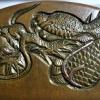


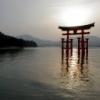
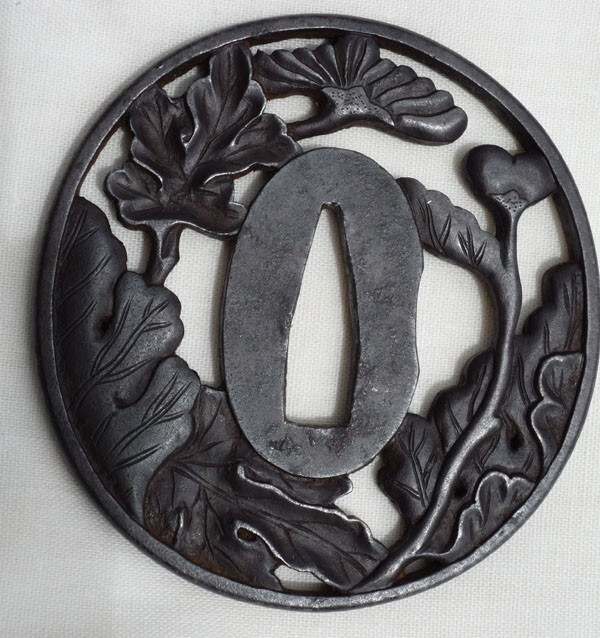








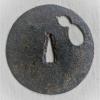






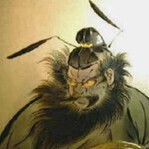


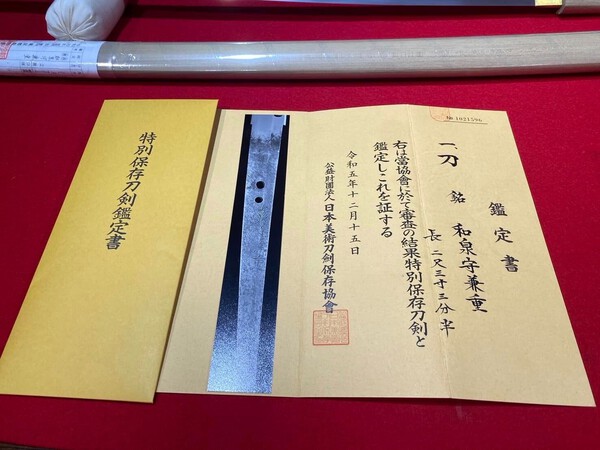


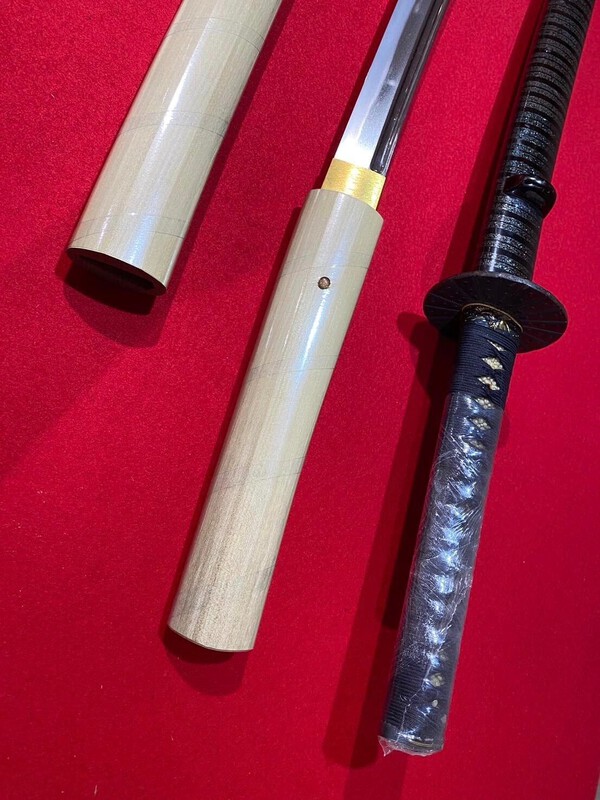
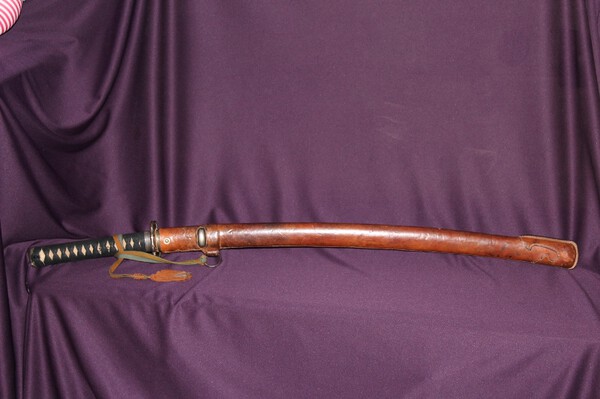
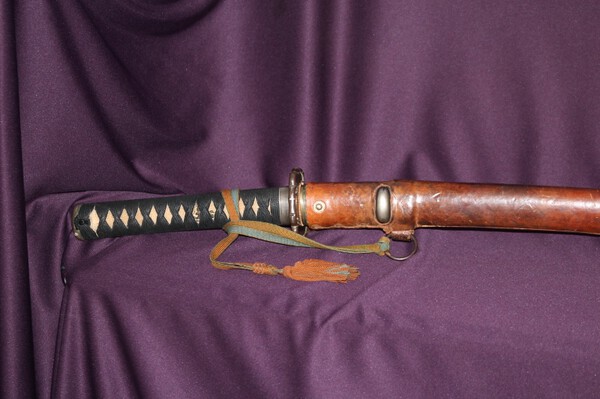

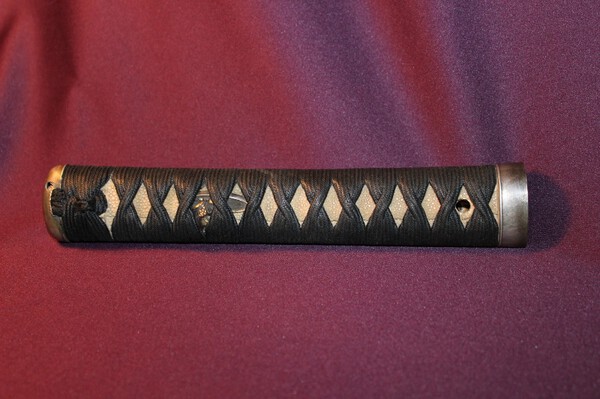
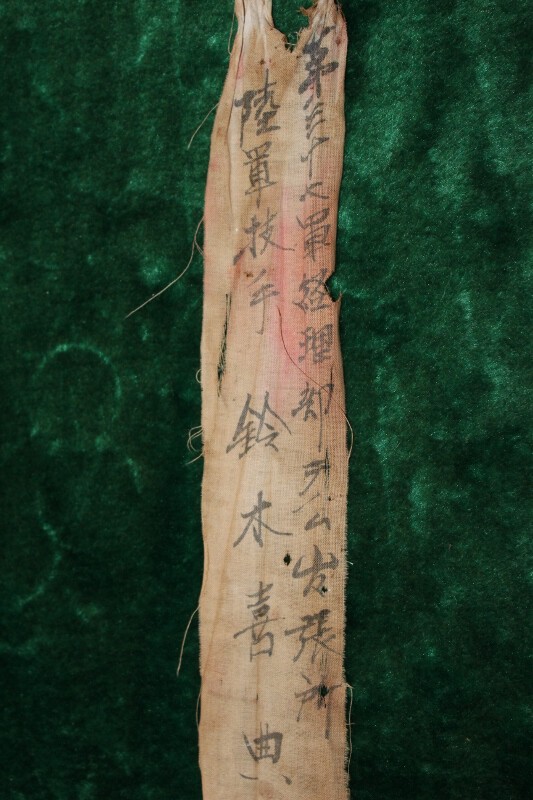
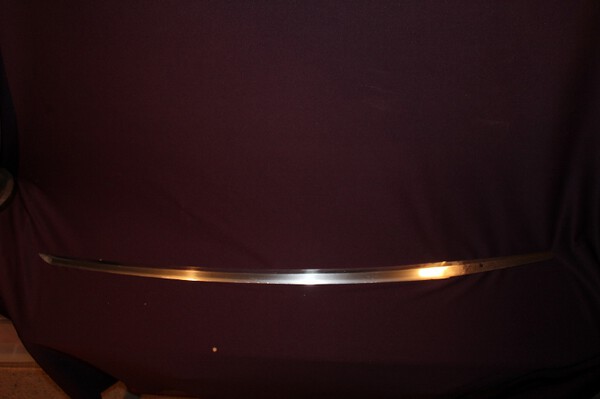

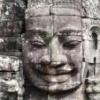
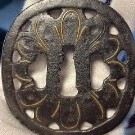






.thumb.png.4c5df79fec171b2dc4a23af38e280a4d.png)







